
This infographic is an easy to understand reference for utilizing Creative Commons when publishing open education resources.
- Subject:
- Educational Technology
- Material Type:
- Diagram/Illustration
- Author:
- Kat Costa
- Date Added:
- 10/27/2022

This infographic is an easy to understand reference for utilizing Creative Commons when publishing open education resources.
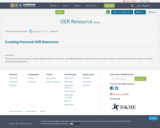
This resource will is meant to help college students, educators, and administration in their quest to use open author to use the open author resource in their schools and classrooms

Open education is a term you have probably heard, but do you know what it means? As its name suggests, it relates to two concepts – openness and education – but it means a whole lot more. What are its aims, benefits and limits? This guide offers a number of tips and avenues for action to help answer these questions and encourage you to make the most of open education. There is a strong focus on open education in the Louvain 2020 strategic plan. UCLouvain wishes to align itself with a vision of the future and the need to share resources, practices, knowledge, tools and more in order to improve access to education, including outside the confines of the University, and education itself. The open education movement is already well established at UCLouvain. Many teachers have shown an interest and have already embraced it. What about you? This guide is intended to help you navigate open education. It explains concepts such as Massive Open Online Courses (MOOCs), Open Educational Resources (OERs), OpenCourseWare (OCW) and Creative Commons (CC) licences.
----------------------
Open Education, un terme que vous avez probablement déjà entendu mais savez-vous pour autant ce qu’il signifie ? Un terme qui sous-entend l’ouverture, l’éducation mais qui ne s’y limite pas. Quel objectif ? Quels avantages ? Quelles limites ? Autant de questions auxquelles ce cahier tentera de répondre en vous livrant quelques clés et pistes d’action pour vous emparer de l’Open Education. Dans son plan stratégique Louvain 2020, l’UCLouvain accorde une attention parti-culière au mouvement de l’Open Education. L’université souhaite répondre à une vision d’avenir, à un besoin de partage des ressources, de mise à disposition de pratiques, de connaissances, d’outils, etc. afin d’améliorer l’accès et l’efficacité de l’éducation y compris au-delà de ses frontières. Le mouvement de l’Open Education est déjà bien ancré au sein de l’université. Nombreux sont les enseignant·e·s qui s’y intéressent et se sont déjà lancés dans la pratique. Et vous ? Ce cahier se veut être un guide pour vous accompagner dans l’Open Education. Il ouvre les portes de certaines notions telles que les Massive Open Online Courses (MOOCs), les Open Educational Resources (OER), les OpenCourseWare (OCW) ou encore les licences Creative Commons (CC). Bonne lecture !
Ce cahier est une ressource libre, couverte par une licence CC. La version "livret broché imprimé" peut être commandé et acheté en ligne via le site https://secure.i6doc.com/fr/cart//?fa=additem&gcoi=28001103861450&item_id=3_9732_165736
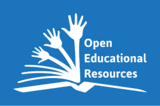
Image used for OERs by UNESCo
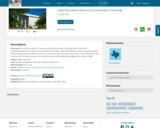
This course is a guide for creating a self-paced community of learning-style curriculum for understanding the basics of Open Educational Resources (OERs). Originally developed in Canvas, this guide includes five learning modules with reflection questions, optional live discussion topics, and quizzes. The purpose of this OER Community of Learning curriculum is to establish a campus-wide baseline knowledge on the subject of OERs.

This lesson plan walks students through the copyright licenses and open educational resources. Students will learn how to author resources using the OER Commons platform, align them to standards, and evaluate them using the Achieve Rubrics.
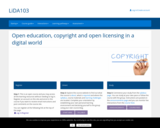
This is a short micro-course that will introduce students to open education, copyright, and open licensing. It is helpful because it contains reading and practice assignments that guide students through copyright. There are optional pre-tests where you can test what you already know about the subject before engaging with the material as well. Throughout the modules, quizzes not only help to keep you engaged, but show you whether you are learning the material.
You are required to create a free account to access the course materials.
It is important to note that this is not strictly based on United States copyright law, but it does provide a good overview of general copyright rules.
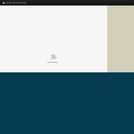
This xerte on-line toolkits resource has been produced as part of the JISC funded BERLiN (Building Exchanges for Research and Learning in Nottingham) project run by The University of Nottingham from April 2009 - April 2010. The project aimed to publish and share the equivalent of 360 credits of Open Educational Resources (OERs), enhance and expand Nottingham's existing Open Educational Repository (U-Now) and foster OER use and reuse.
This open educational resource aims to share knowledge gained from involvement in the BERLiN OER project, develop open content literacy and explore perspectives, attitudes and approaches to open learning. In order to promote the use and reuse of OERs across the University, an ‘Open for Learning’ module was created. The module is available as an optional module on the Nottingham PGCHE and supports Nottingham’s open philosophy. This resource presents the information delivered as part of the 'Open for Learning Module.'
This resource will be of interest to new OER content makers and sharers, learners and educators wishing to:
- Discover or source Creative Commons educational resources and images
- Use and attribute creative commons resources appropriately
- Explore the process and licences involved in creating and publishing OERs as well as their own attitudes and perspective on this topic
This resource is suitable for all levels of study.

Created as part of the Creative Commons Licensing Certificate, this video provides an introduction to Open Educational Resources, Open Access, and Creative Commons licensing for faculty who may be interested in publishing or using open resources.
CC BY 4.0
![The Other Fifty Weeks: An Open Education Podcast [Episode 5]](https://img.oercommons.org/160x134/oercommons/media/courseware/lesson/image/16-344-The-Other-Fifty-Weeks-Podbean-v21_npJIAJT.jpg)
The fifth episode of "The Other Fifty Weeks: An Open Education Podcast", featuring Paul Stacey, and discussing the notion of The Commons.
![The Other Fifty Weeks: An Open Education Podcast [Episode 9]](https://img.oercommons.org/160x134/oercommons/media/courseware/lesson/image/16-344-The-Other-Fifty-Weeks-Podbean-v21_7rrxNGi.jpg)
The ninth episode of "The Other Fifty Weeks: An Open Education Podcast", discussing the affordances and freedoms of openness with Cable Green.

In this one hour webinar, we’ll discuss best practices and practical strategies for deciding when and how much of a copyrighted work you can include under fair use. After the workshop, educators will be able to enrich their course materials with photos, video clips, newspaper articles, and more. Better yet, they will know how to share them with a larger audience.
Bookmarks
Introduction: 0:00
Mini Intro to Copyright and Creative Commons: 9:33
Tools & Resources: 15:45
Language Specific Examples: 26:48
Webinar Materials
- Webinar Slides: https://docs.google.com/presentation/...
- Overcoming Copyright Fear Worksheet: Fair Use: https://docs.google.com/document/d/1z...
- Overcoming Copyright Fears Questions Document: https://docs.google.com/document/d/1_...
Connect with the Pathways Project on Social Media:
- Instagram: https://www.instagram.com/boisestatep...
- LinkedIN: https://www.linkedin.com/groups/9178362/
- Twitter: https://twitter.com/PathwaysBSU
Overcoming Copyright Fears Webinar by The Pathways Project is licensed under a Creative Commons Attribution-NonCommercial-ShareAlike 4.0 International License.
http://creativecommons.org/licenses/b...
Acknowledgement
The Pathways Project is grateful to provide this professional development opportunity thanks to a recently awarded National Endowment for the Humanities Digital Humanities Advancement Grant.
About the National Endowment for the Humanities
Created in 1965 as an independent federal agency, the National Endowment for the Humanities supports research and learning in history, literature, philosophy, and other areas of the humanities by funding selected, peer-reviewed proposals from around the nation. Additional information about the National Endowment for the Humanities and its grant programs is available at: http://www.neh.gov

Partage de vidéo sur Youtube, Licences Creative Commons, Youtube Standard Licence, attribution d'une licence CC à ma vidéo
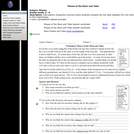
Data pattern recognition exercise where students compare the two daily datasets (for one month) to find relationships.
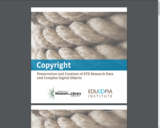
This guide focuses specifically on some of the decisions you may need to make regarding the materials you have created or used in your research process, including drawings and photographs, tables and charts, lab notes and datasets, interviews and newscasts, software and digital artworks. It describes in non-legal language the basics of a few important terms, including “fair use,” “public domain,” “Creative Commons,” and “patent” as they may apply to these materials. Failure to consider the implications of different copyright and patent approaches for your own work can limit the impact of your work. Failure to adequately review, vet, and seek permission to use others’ work can, in a worst-case scenario, prevent your work from getting published or (in rare cases) lead to legal actions.
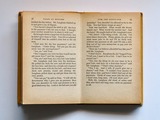
The following content is developed for satisify course requirements for the MDDE 622 course in Fall 2018.In the era of remixing and sharing, it is important to understand how copyright and licensing impact content creation. This learning module will introduce the topic of copyright and licensing to the reader. The module will also include an introduction to Creative Commons, the tools and resource provided by CC, the CC licenses, and finally how to properly provide attribution when using CC licensed content.The intended audience for this learning module includes faculty, instructional designers, and content developers who create and share educational content. This module can be embedded into instructional design courses that introduce topics such as sourcing, licensing, copyright, Creative Commons, and attribution.Note: All content provided here is licensed under CC BY unless specified otherwise.
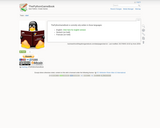
Free cc-by-sa licensed wikibook about how to learn computer game programming using python, pygame and other free & open source tools.
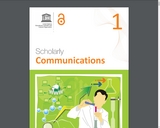
Researchers, scholars and scientists main business is scholarly communication. We communicate about our work to others, as we push the boundaries of what we know and the society knows. We question established notions and truths about science. We share our findings with others, and in a way that is popularly known as scholarly communication which emerged with the publication of first journal in 1665. However, the term gained popularity only in the 1970s, as access to peer reviewed and scholarly communication became difficult. This module has four units covering introduction to scholarly communication, peer reviewed journals, electronica journals and databases and the Serials Crisis. At the end of this module, the learner is expected to be able to:
- Explain philosophy, mission, and objectives of scholarly communication
- Describe the process of scholarly communication
- Identify different channels of scholarly communication
- Discuss the dysfunctioning of the scholarly communication
In Unit 1, Introduction to scholarly communication, we have discussed different aspects of scholarly communication – particularly its genesis, importance and ethics of academic publishing, and different communication channels available in academic publishing. Some of these channels are commonly described as primary sources as they provide first-hand testimony or direct evidence concerning a topic under investigation. Historically, scientific journals were initiated by learned societies and other scholarly communities for reporting results of concluded research works or scientific discoveries. Now many forprofit publishers have started publishing research journals.
Unit 2, Communicating with Peer Review Journals, covers two important academic publishing channels, namely peer reviewed journals, conferences and their proceedings. This Unit also highlights different methods and procedures of peer reviewing for publishing primary literature emanated from research studies. The peer reviewing is essential for validating quality of research findings conveyed by researchers, which are subject to fulfilment of ethical standards and appropriate research design, sampling and other methodological issues.
In Unit 3, Electronic journals and databases, we have discussed the emergence of electronic journals in academic and research environment due to wide proliferation of information and communication technologies (ICT) in research communications and academic publishing. Scientific communities and scientific communications from the global South are getting substantive attentions through adaptation of electronic journals and electronic academic databases in the process of research communications.
In Unit 4, the Serials Crisis, we discuss the cost of peer reviewed publications and the problems faced by researchers in developing countries. The focus of this unit is on highlighting the problems and discusses possible solutions including the emergence of open access as one of the solutions. Open access journal publishing helps in mitigating some of the problems associated with serials crisis.
This is Module One of the UNESCO's Open Access Curriculum for Researchers.
Full-Text is available at http://unesdoc.unesco.org/images/0023/002319/231938e.pdf

This resource is about finding and recognizing OER. How to search for Open Educational Resources (OER)?Which material to use for my OER?How to attribute open material using the TASLL rule?Except where otherwise noted, this work is licensed under CC BY 4.0 (https://creativecommons.org/licenses/by/4.0/) by ZHAW, University Library (17 October 2022).
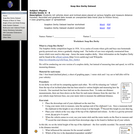
Students roll vehicles down and inclined plane placed at various heights and measure distance traveled. Recorded and graphed data reveals an unexpected data trend (due to friction force).